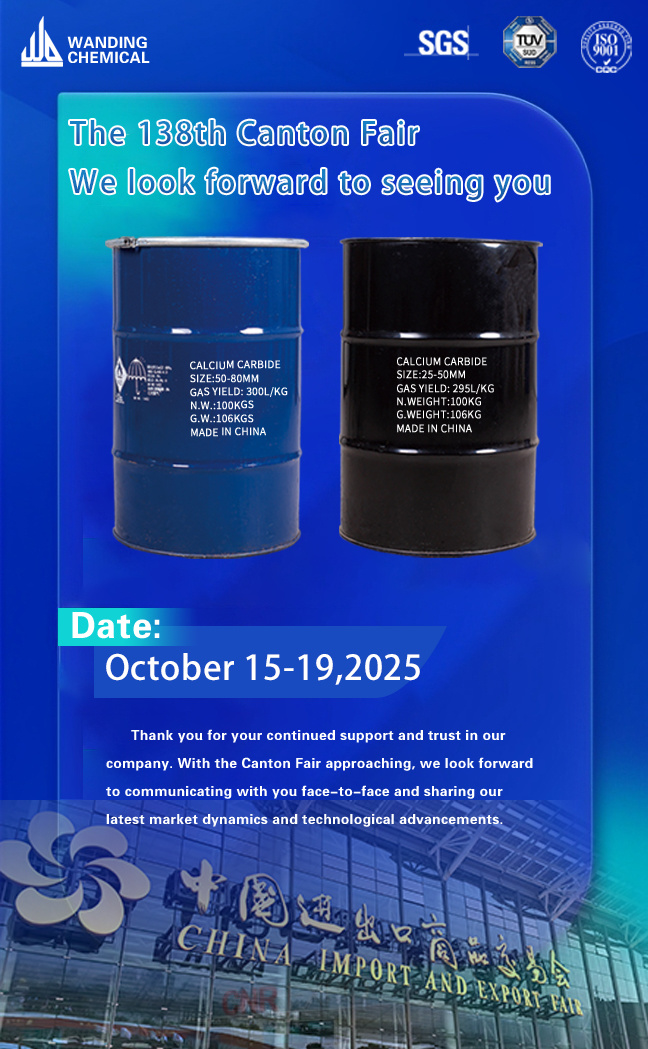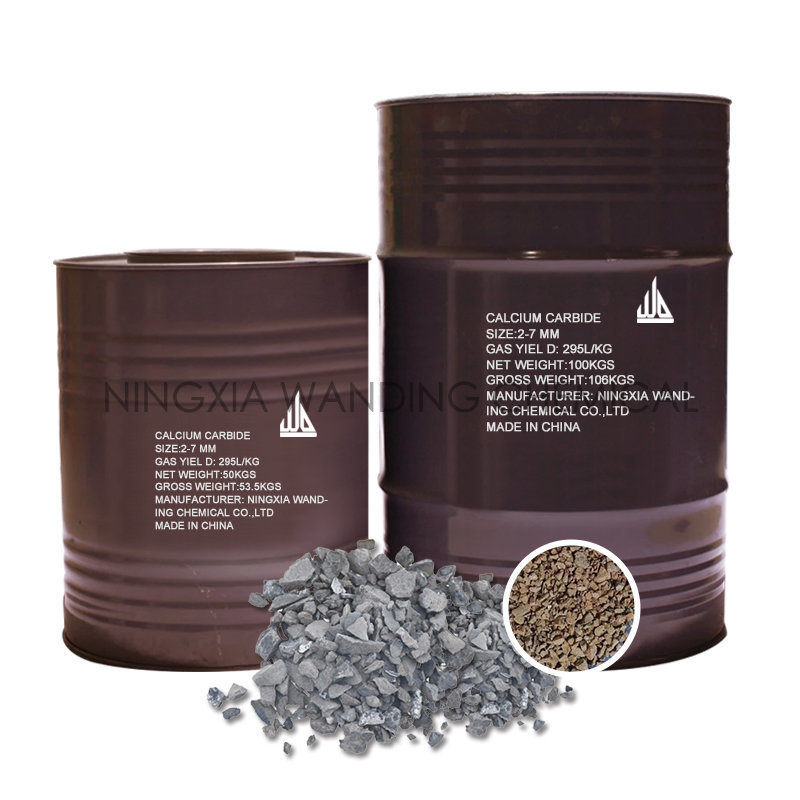Chemical Innovations: How Calcium Carbide is Shaping Industry Standards
Release Time:
2025-02-23
Chemical Innovations: How Calcium Carbide is Shaping Industry Standards Table of Contents Introduction to Calcium Carbide and Its Importance A Brief History of Calcium Carbide Chemical Properties of Calcium Carbide Key Industrial Applications of Calcium Carbide 1.1 Acetylene Production 1.2 Steel Manufacturing 1.3 Carbide Lamps and Their
Chemical Innovations: How Calcium Carbide is Shaping Industry Standards
Table of Contents
- Introduction to Calcium Carbide and Its Importance
- A Brief History of Calcium Carbide
- Chemical Properties of Calcium Carbide
- Key Industrial Applications of Calcium Carbide
- 1.1 Acetylene Production
- 1.2 Steel Manufacturing
- 1.3 Carbide Lamps and Their Uses
- 1.4 Fertilizer Production
- Environmental Impact and Safety Considerations
- Recent Chemical Innovations Involving Calcium Carbide
- The Future of Calcium Carbide in Industry
- Conclusion
- FAQs
Introduction to Calcium Carbide and Its Importance
Calcium carbide, a chemical compound with the formula CaC2, is pivotal in various industrial applications. Its significance lies in its capacity to generate acetylene, a vital component in the synthesis of organic chemicals. As industries evolve and seek sustainable solutions, calcium carbide is emerging as a key player, driving innovations and setting new standards. This article delves into the multifaceted role of calcium carbide in modern chemistry and industry.
A Brief History of Calcium Carbide
The journey of calcium carbide began in the late 19th century when it was first synthesized by the American chemist Thomas L. Willson in 1862. Initially, its production was a cumbersome process, primarily involving the high-temperature reaction of lime and carbon. Over the years, advancements in technology have simplified manufacturing methods, making calcium carbide more accessible and affordable for various industries. The discovery of its ability to generate acetylene set the stage for its widespread use in welding, cutting, and even in the production of synthetic rubber.
Chemical Properties of Calcium Carbide
Calcium carbide is characterized by its unique chemical properties. It appears as a grayish-black solid and reacts vigorously with water, producing acetylene gas and calcium hydroxide. This reaction is not only exothermic but also forms the basis for its applications in welding and manufacturing. The compound has a melting point of approximately 2160°C, making it highly stable under normal conditions.
Key Industrial Applications of Calcium Carbide
Calcium carbide is utilized in a range of industries, showcasing its versatility and essential role in various chemical processes. Below, we explore some of the primary applications:
1.1 Acetylene Production
The most significant application of calcium carbide is in the production of acetylene gas. When calcium carbide reacts with water, it releases acetylene, which is invaluable in the chemical industry for producing organic compounds. Acetylene serves as a precursor in the synthesis of plastics, solvents, and pharmaceuticals, thus cementing calcium carbide's importance in manufacturing.
1.2 Steel Manufacturing
In the steel industry, calcium carbide acts as a desulfurizing agent. By removing sulfur from molten iron, it enhances the quality of steel. This application is crucial for producing high-grade steel used in construction, automotive, and aerospace industries, where material integrity is paramount.
1.3 Carbide Lamps and Their Uses
Calcium carbide's ability to produce acetylene has made it an essential component in carbide lamps, historically used for lighting in mines and lighthouses. Although modern lighting solutions have largely replaced these lamps, they still hold value in specific applications, such as camping and emergency lighting, where portability and reliability are key.
1.4 Fertilizer Production
Calcium carbide also plays a role in agriculture as a precursor for producing calcium cyanamide, a nitrogen-rich fertilizer. By providing essential nutrients to crops, calcium cyanamide enhances soil quality and boosts agricultural productivity, contributing to food security.
Environmental Impact and Safety Considerations
While calcium carbide is instrumental in various applications, its use raises environmental and safety concerns. The production and disposal of calcium carbide must adhere to stringent regulations to minimize environmental impact. Furthermore, acetylene, when improperly handled, poses explosion risks. Industries utilizing calcium carbide should implement safety measures and conduct regular training for employees to mitigate these risks.
Recent Chemical Innovations Involving Calcium Carbide
Recent advancements in chemical engineering have led to innovative applications of calcium carbide. Researchers are exploring its potential in carbon capture technologies and energy storage solutions. These innovations aim to enhance sustainability and reduce the carbon footprint of industries reliant on fossil fuels.
One promising area involves the development of calcium carbide as a means to store hydrogen. By reacting calcium carbide with water, hydrogen can be released efficiently, providing a potential avenue for renewable energy solutions. This not only highlights the adaptability of calcium carbide but also its role in addressing contemporary energy challenges.
The Future of Calcium Carbide in Industry
Looking ahead, the future of calcium carbide appears promising. As industries prioritize sustainability, the demand for eco-friendly materials and processes is likely to rise. Calcium carbide, with its multifunctional applications, is well-positioned to meet these demands. Research initiatives focused on enhancing its efficiency and safety will further solidify its place in the industrial landscape.
Moreover, the ongoing exploration of calcium carbide in emerging technologies such as waste-to-energy conversion and advanced materials synthesis will open new avenues for its application. This adaptability underscores the compound's potential to remain a cornerstone in the field of chemistry and manufacturing.
Conclusion
Calcium carbide is more than just a chemical compound; it is a fundamental player in shaping industry standards across various sectors. From its historical roots to modern innovations, calcium carbide continues to influence manufacturing, energy production, and agriculture. As we move toward a more sustainable future, its role will only become more critical. The commitment to leveraging calcium carbide's applications while addressing environmental and safety concerns will be vital in maximizing its benefits for industries worldwide.
FAQs
1. What is calcium carbide used for?
Calcium carbide is primarily used in the production of acetylene gas, which is vital in the chemical industry for manufacturing organic compounds, plastics, and pharmaceuticals. It is also utilized in steel manufacturing, fertilizer production, and historical carbide lamps.
2. Is calcium carbide safe to use?
Calcium carbide can be hazardous if not handled properly. It reacts vigorously with water and can produce explosive acetylene gas. Safety precautions and proper training are essential for workers handling this chemical.
3. How is calcium carbide produced?
Calcium carbide is produced by heating lime (calcium oxide) and carbon in an electric arc furnace at high temperatures. This process allows the two materials to react and form calcium carbide.
4. What are the environmental impacts of calcium carbide?
The production and disposal of calcium carbide can have environmental implications, including pollution and potential hazards associated with acetylene. Adhering to safety regulations and proper waste management is crucial to mitigate these impacts.
5. Can calcium carbide be used in renewable energy solutions?
Yes, recent research explores calcium carbide's potential in hydrogen storage and carbon capture technologies, making it a candidate for renewable energy solutions and sustainable practices in the industry.
News Hotspot





















